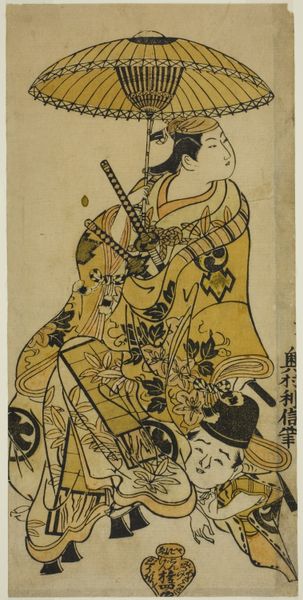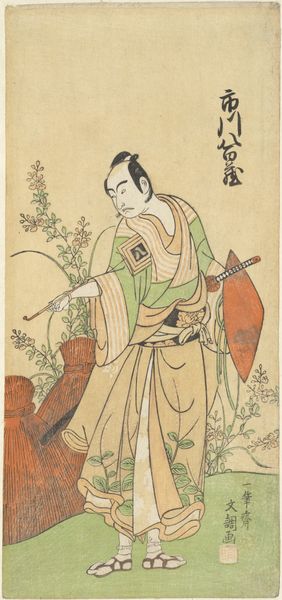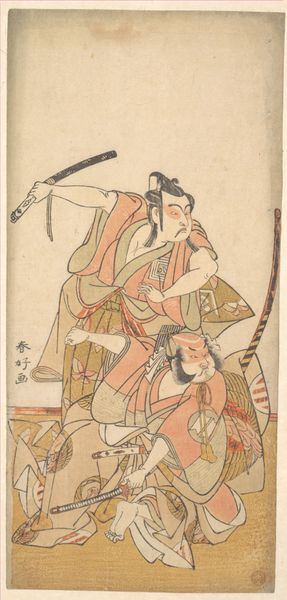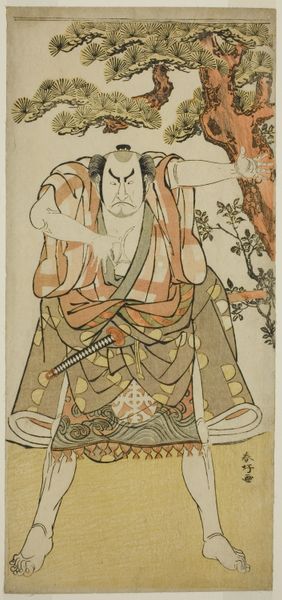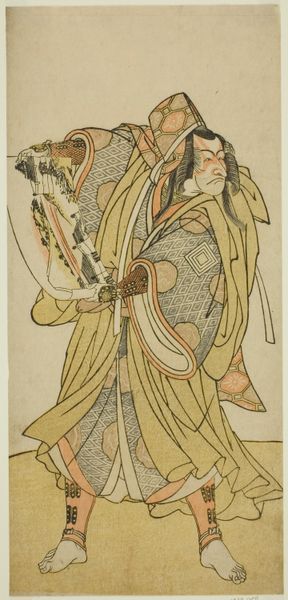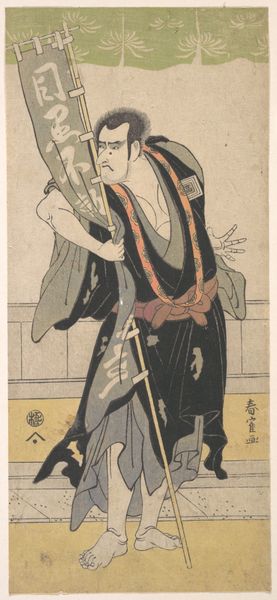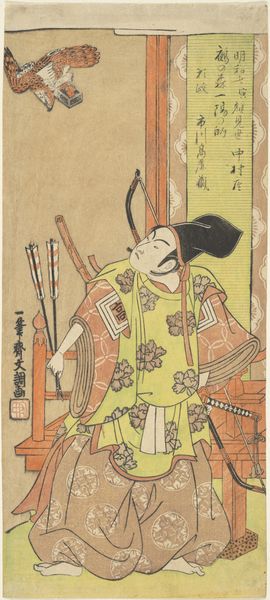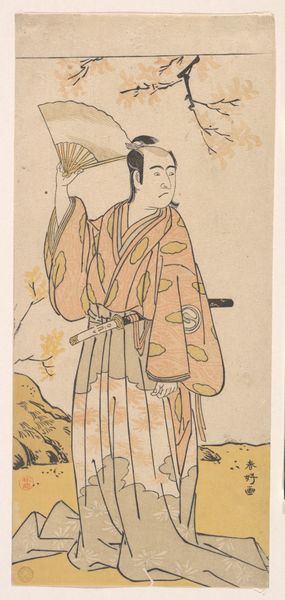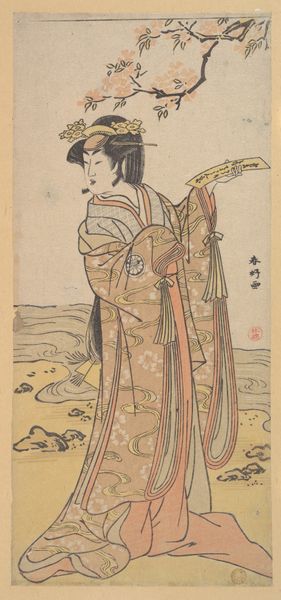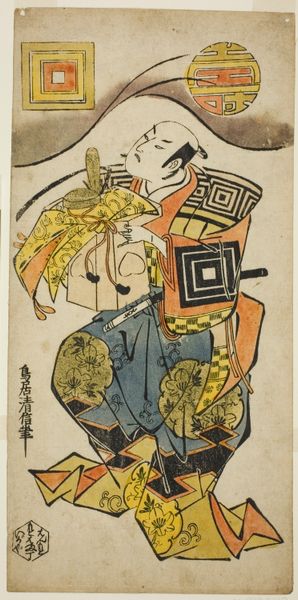
The Actor Otani Hiroemon III as Osada no Zenjo Kagemune in the Play Izu-goyomi Shibai no Ganjitsu (First Performance Day of the Izu Calendar), Performed at the Morita Theater from the First Day of the Eleventh Month, 1772 c. 1772
0:00
0:00
print, ink
#
ink drawing
# print
#
asian-art
#
ukiyo-e
#
japan
#
figuration
#
ink
#
genre-painting
Dimensions: 30.5 × 14.4 cm (12 × 5 11/16 in.)
Copyright: Public Domain
Curator: Before us is a print by Katsukawa Shunko, made around 1772. Its rather a mouthful: “The Actor Otani Hiroemon III as Osada no Zenjo Kagemune in the Play Izu-goyomi Shibai no Ganjitsu." Editor: My first impression is one of raw energy; a moment caught in motion. The rough lines, the almost monochromatic palette—it’s dynamic. Curator: Indeed. Shunko was working within the Ukiyo-e tradition, which celebrated urban life, especially the Kabuki theatre. This work, in particular, documents a specific performance. Editor: Note how the angular folds of the clothing are juxtaposed with the soft texture of the landscape and the meticulously rendered pine needles. There’s a clear sense of contrast. Semiotically speaking, the swords might denote violence, honor, or a position of authority. Curator: Context is key here. Kabuki wasn’t just entertainment; it was a space where social norms could be tested, where audiences could engage with alternative narratives, sometimes critical of authority. Depicting actors in roles was a way to immortalize these performances. Editor: And the rendering of the actor’s face! It is exaggerated to convey great intensity, emphasizing the artifice, that very specific mask that performance requires. You almost can smell the greasepaint. The actor's grip on that staff really drives that power home. Curator: The theater during the Edo period faced frequent censorship, particularly if plays were seen as subversive. Prints like these offered a relatively uncensored glimpse into that world and how theatricalized representations of figures played out. They offer insight into those anxieties. Editor: Ultimately, what resonates for me is the artwork's powerful presence, how this particular use of line and color transcends its time. Its raw emotional intensity makes it still immediate to this modern viewer. Curator: And for me, considering the political weight art carries through eras is important to our shared understanding of the human condition. The actor now becomes both figure and a representation of societal critique.
Comments
No comments
Be the first to comment and join the conversation on the ultimate creative platform.
